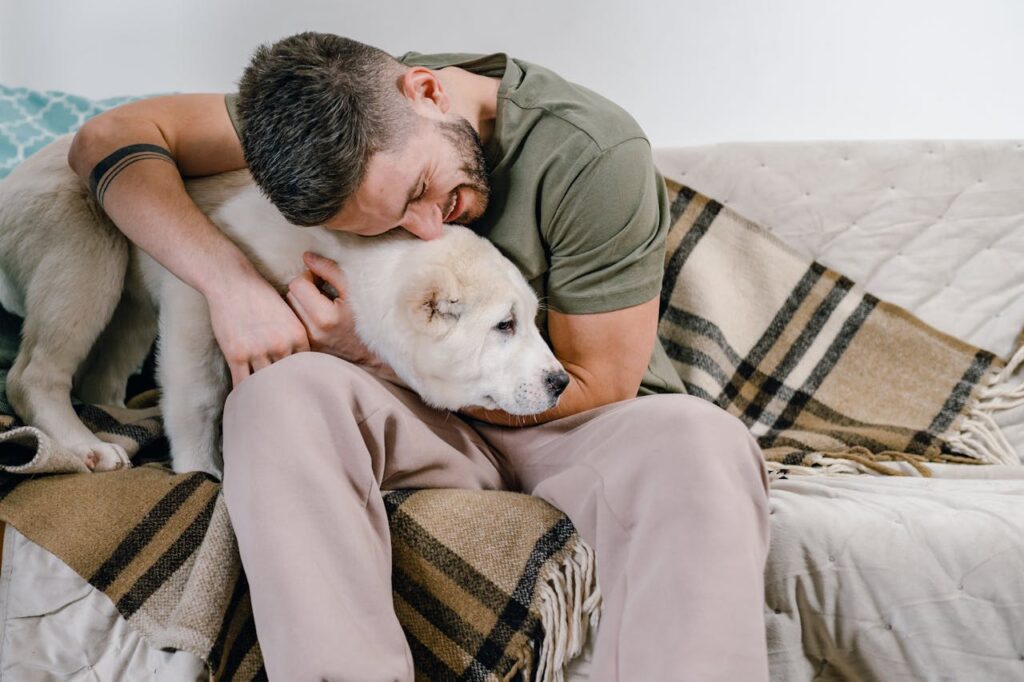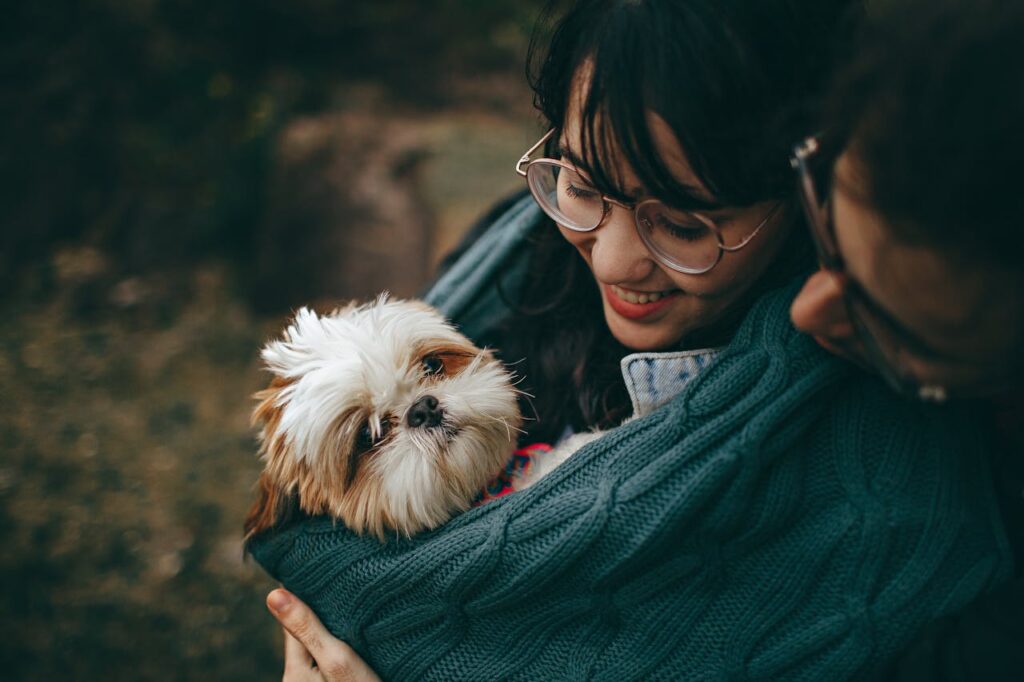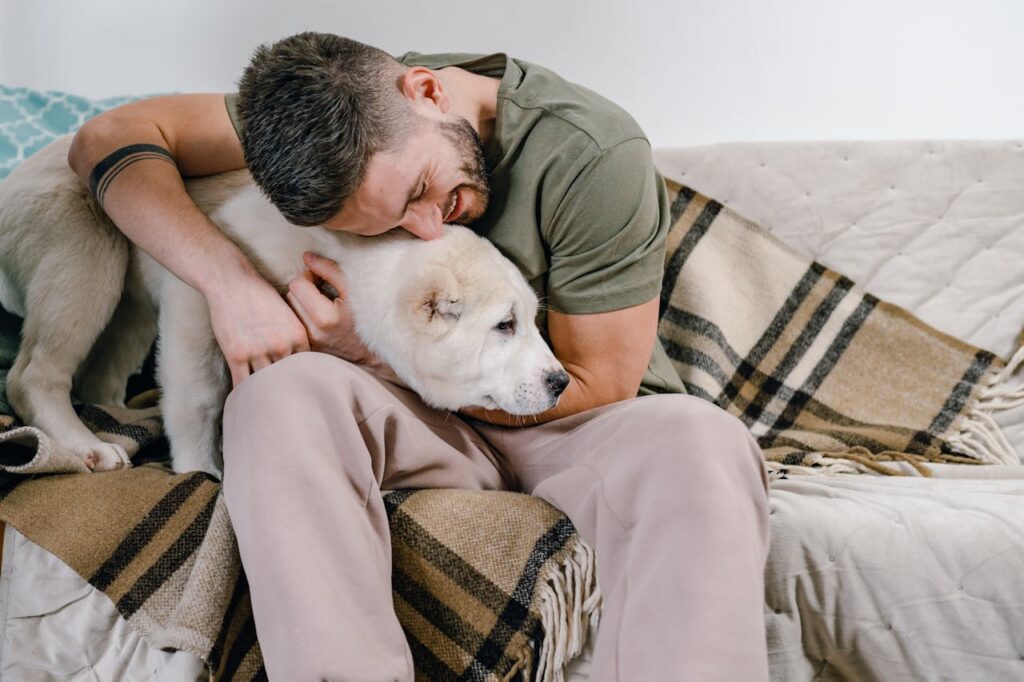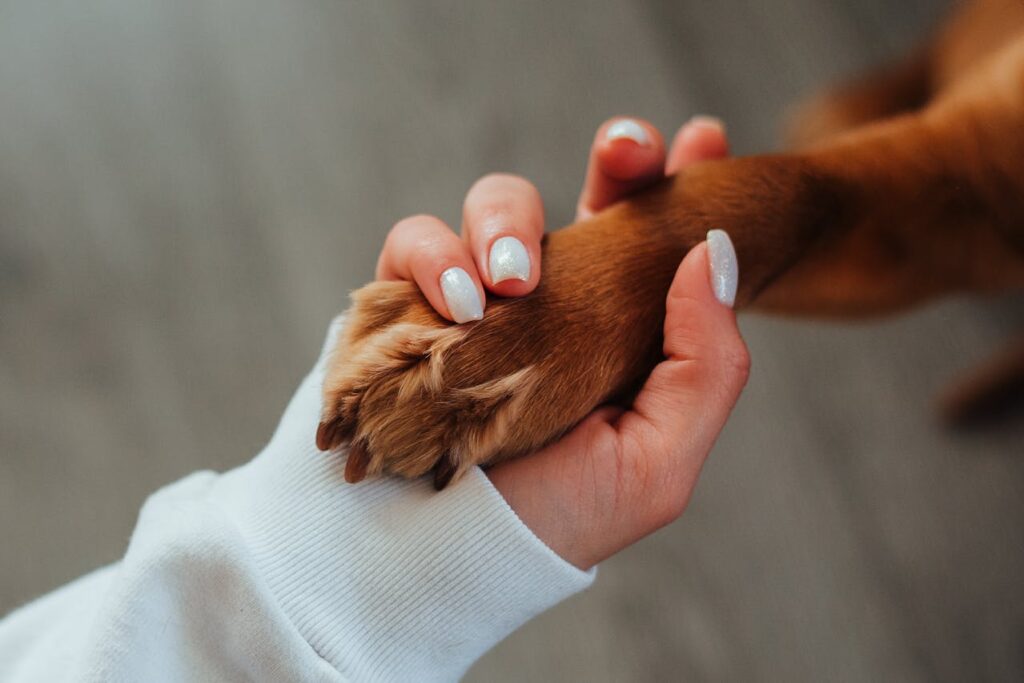Dogs Can Detect Parkinson’s Disease by Smell Years Before Symptoms Appear, With up to 98% Accuracy, a New Study Finds.

What if your best friend could smell the future? Not in a mystical way, but in a way that could change the course of your life. Imagine a simple nudge from a dog, a pause, a sniff, a look, revealing an illness long before any test or symptom. It sounds impossible, yet science is proving it is real. Hidden in the air around us are chemical stories of our health, and for those with the right nose, the truth is impossible to ignore.
The Science Behind a Dog’s Super Nose
If you have ever watched a dog stop mid walk, nose twitching at something invisible to you, you have seen a miracle in motion. What to us is air, empty and ordinary, is to them a world bursting with stories. Each breath carries messages written in scent, and dogs are master readers.

Their sense of smell is not just better than ours, it is on another level entirely. While humans have about six million olfactory receptors in our noses, dogs can have up to 300 million. That is not just a bigger nose, it is a different sensory reality. The part of their brain devoted to processing smells, the olfactory bulb, is proportionally about 40 times larger than ours, allowing them to separate and recognize scents with staggering precision.
Here is the astonishing part. What they are smelling are volatile organic compounds, or VOCs, tiny chemical molecules released by our bodies, plants, and even diseases. Illnesses such as Parkinson’s, cancer, and infections subtly change these compounds, creating a scent signature. To us, it is imperceptible. To a dog, it is as distinct as a fingerprint.
In a double blind trial conducted by the Universities of Manchester and Bristol, in collaboration with Medical Detection Dogs, two specially trained canines, Bumper the Golden Retriever and Peanut the Black Labrador, distinguished between skin swabs from individuals with and without Parkinson’s. The dogs achieved up to 80 percent sensitivity and up to 98 percent specificity. This confirms that Parkinson’s leaves a detectable chemical signature on the skin, one that dogs can reliably sense even in samples from people with other health conditions.
This is why, for certain medical conditions, dogs are not just companions. They are living diagnostic tools. Their noses open doors to a kind of early detection we once thought only machines could achieve.
Parkinson’s and the Scent of Sebum
Before symptoms take hold, Parkinson’s may already be writing its story on the skin. Not in rashes or visible marks, but in the quiet language of chemistry. Sebum is a thin, protective oil our skin produces every day. It keeps the surface supple, shields it from bacteria, and locks in moisture. To the human senses, sebum is largely unremarkable. To science, it is becoming a window into the hidden changes of disease.
In Parkinson’s, the chemistry of this oil shifts in a way that is invisible to sight and smell. The balance of its fatty acids, waxes, and other compounds changes, creating a new chemical pattern. This change appears to happen long before tremors or stiffness begin, suggesting that Parkinson’s starts whispering its presence years before it raises its voice.

If researchers can pinpoint and map these chemical alterations with precision, sebum could become the basis for a simple, non invasive screening test. A quick swab from the skin could offer an early warning, opening the door to treatment at a stage when it may be most effective.
The lesson is clear. The body leaves clues in places we rarely think to look. And sometimes, the smallest traces, the faintest chemical footprints, can lead us to answers that change the course of a life.
Beyond Parkinson’s: Diseases Dogs Can Detect
Illness leaves a trail most of us will never smell. Dogs can. Across conditions, peer reviewed studies show trained dogs picking up disease specific chemical signatures with measurable accuracy.
- Bladder cancer: In a proof of principle clinical trial, six trained dogs identified urine from patients with bladder cancer at a mean success rate of 41 percent versus 14 percent expected by chance. This was the first controlled evidence that tumor related volatile compounds create a detectable odor profile.
- Lung and breast cancers: Five household dogs distinguished breath samples from patients with lung or breast cancer and from healthy controls under double blind conditions. Reported accuracy was high, with sensitivity and specificity for lung cancer at 99 percent and 99 percent, and for breast cancer at 88 percent and 98 percent.
- Diabetes hypoglycemia alerts: Diabetes alert dogs trained on human scent changes signaled low blood sugar in an in vitro setup with sensitivities from 50 percent to 87.5 percent and specificities from 89.6 percent to 97.9 percent. Results show real signal detection beyond chance and justify real world evaluation.
- Clostridioides difficile infection: In hospitals, a trained Beagle identified C difficile in stool samples with 100 percent sensitivity and 100 percent specificity, and detected infected patients on the ward with 83 percent sensitivity and 98 percent specificity.
- Malaria: Dogs trained by researchers at the London School of Hygiene and Tropical Medicine detected malaria infection from the odor of worn socks collected from Gambian schoolchildren, including asymptomatic cases, under blinded conditions.
- COVID 19: In a randomized, double blind study using axillary sweat, seven trained dogs reached sensitivities of 87 to 94 percent and specificities of 78 to 92 percent, supporting operational screening in places like airports and events.
Taken together, these results are not party tricks. They are signals from a deeper biology. Diseases change our chemistry, and those changes move through the air. Dogs meet us there, at the edge of what we cannot perceive, turning the unseen into something we can act on.
Training the Medical Scent Detective
We do not find these dogs. Scientists and trained dog experts shape them. The work begins with temperament, focus, and play drive, then becomes a conversation between curiosity and consistency. What looks like magic is really method.
- Selecting the right dog: Programs start by screening for a steady temperament, strong motivation to work for rewards, and the kind of persistence that keeps a nose on task. Quality assurance matters from day one. Short, validated discrimination tests help confirm a dog can reliably tell one odor from another before full training begins.
- Building the scent picture: Trainers pair the target odor with a high value reward so the dog learns that indicating on that scent pays off. Sessions are brief and frequent. Dogs practice with diverse samples to avoid memorizing individual people and instead learn the common chemical signature. Trials that tried and refined these steps in clinical setups, such as prostate cancer training, helped establish practical guardrails for sample handling, randomization, and record keeping.
- Preventing bias and “Clever Hans” effects: Good science protects the signal. That means double blind designs so neither handler nor observer knows where the target is, randomized sample placement, blank runs with no target present, and strict rules about handler body language. Reviews and experimental work in canine olfaction are clear on this point. Double blind is the gold standard for avoiding human influence.
- Testing, not guessing: Once a dog is performing, teams move to formal evaluations. Metrics include sensitivity, specificity, false alerts, and performance on truly novel samples. Research groups have proposed bias checks and audit tools so labs can catch drift early and keep results reproducible across sites.
- Maintaining performance over time: Skill is a living thing. Dogs need regular “maintenance” sessions to keep the odor in long term memory, especially when real world searches have few true positives. Studies show that tune ups and thoughtful target prevalence prevent vigilance drops and keep accuracy stable.
Trained medical detection dogs are not replacements for clinicians. They are sensitive, rapid, non invasive screeners whose value depends on rigorous training, careful study design, and ongoing quality control. When those pieces are in place, the nose becomes a reliable instrument.
Staying Proactive About Your Health
A dog’s ability to detect illness reminds us that the body often speaks before we notice. While most of us do not have a trained scent detection dog at our side, we can take simple, consistent steps to tune into our own early warning signs and protect our health.

- Pay attention to subtle changes
Small shifts in skin texture, smell, energy levels, or appetite can sometimes be the first sign something is off. Make it a habit to notice and mentally log unusual changes, even if they seem minor. - Schedule regular checkups
Routine screenings catch problems early, when treatment is most effective. Set yearly appointments with your doctor and follow recommended screening schedules for your age group and risk factors. - Keep a health journal
Record symptoms, mood, diet, and sleep patterns. Over time, patterns emerge that you or your healthcare provider can act on. Research supports symptom tracking as a valuable tool in early diagnosis for many conditions. - Maintain good skin and hygiene practices
Some illnesses alter the skin’s chemistry. Keeping skin clean and healthy helps you spot changes faster and reduces infection risks. - Trust your instincts
If something feels wrong, seek medical advice. Studies show that patient-reported concerns, even without obvious symptoms, can lead to earlier detection and better outcomes.
Call to Action: Trust the Unseen Signals
The most important signals in life are often the quietest. They do not arrive with alarms or flashing lights. They come as small shifts in how we feel, subtle changes in our skin, or an intuition that something is different.
Dogs remind us that paying attention can save lives. Their noses turn whispers into warnings, giving us a chance to act before it is too late. We may not share their sense of smell, but we can share their awareness. We can choose to listen — not just to the noise of life, but to the subtle truths that move beneath it.

Your body is speaking to you every day. Slow down enough to hear it. Respect what it tells you. And when something feels off, have the courage to investigate. Because sometimes, the smallest clue is the one that changes everything.
Loading...

